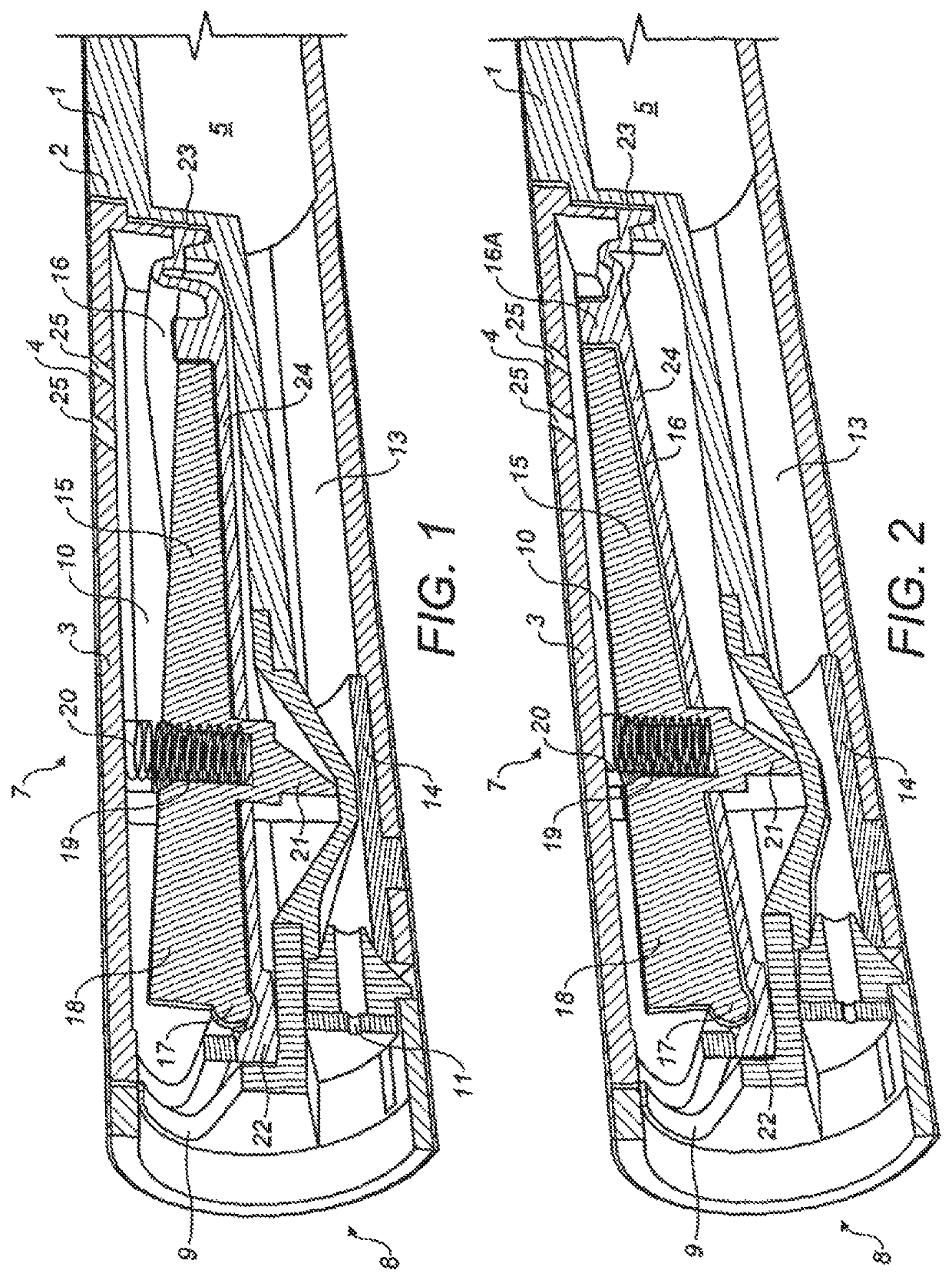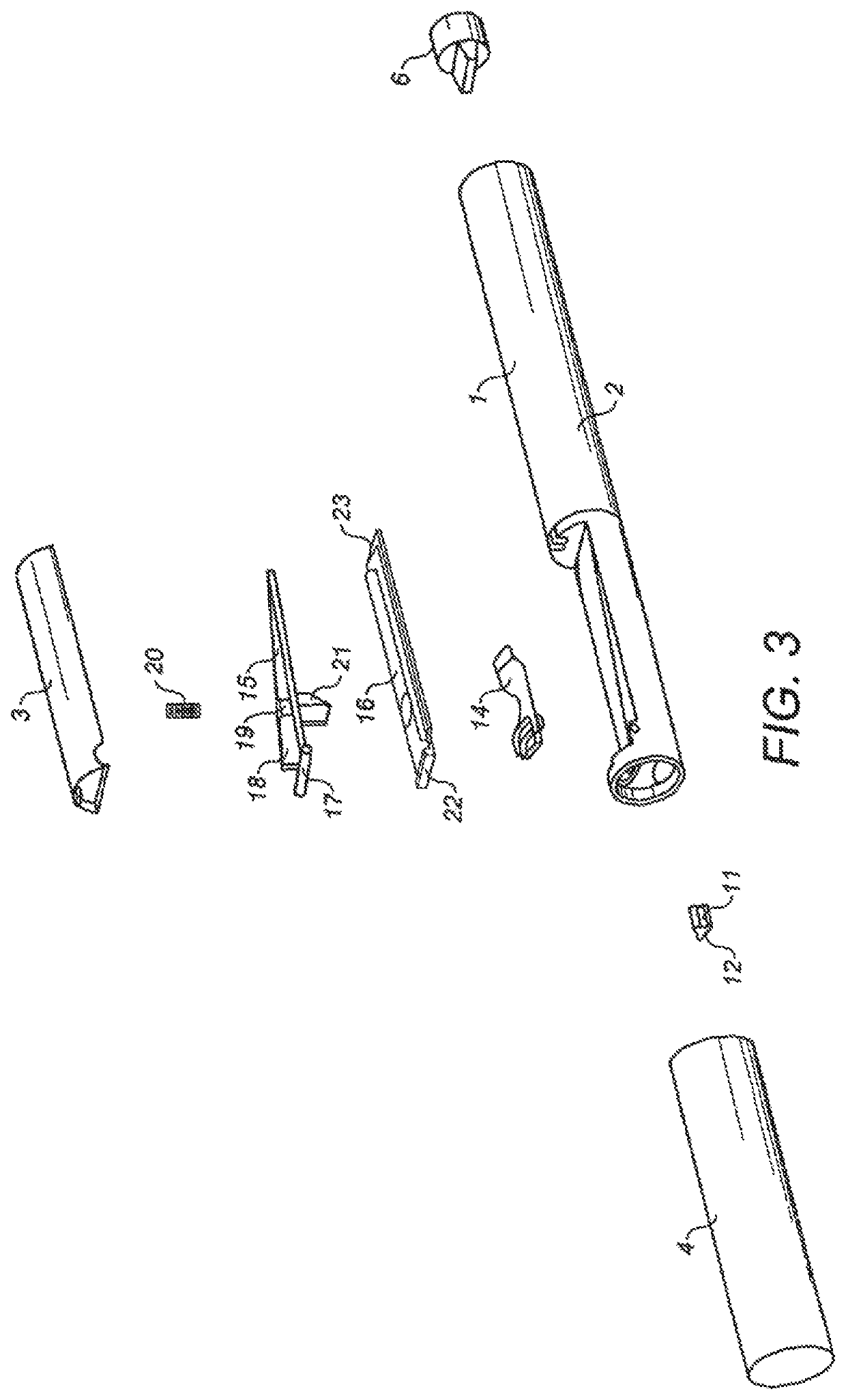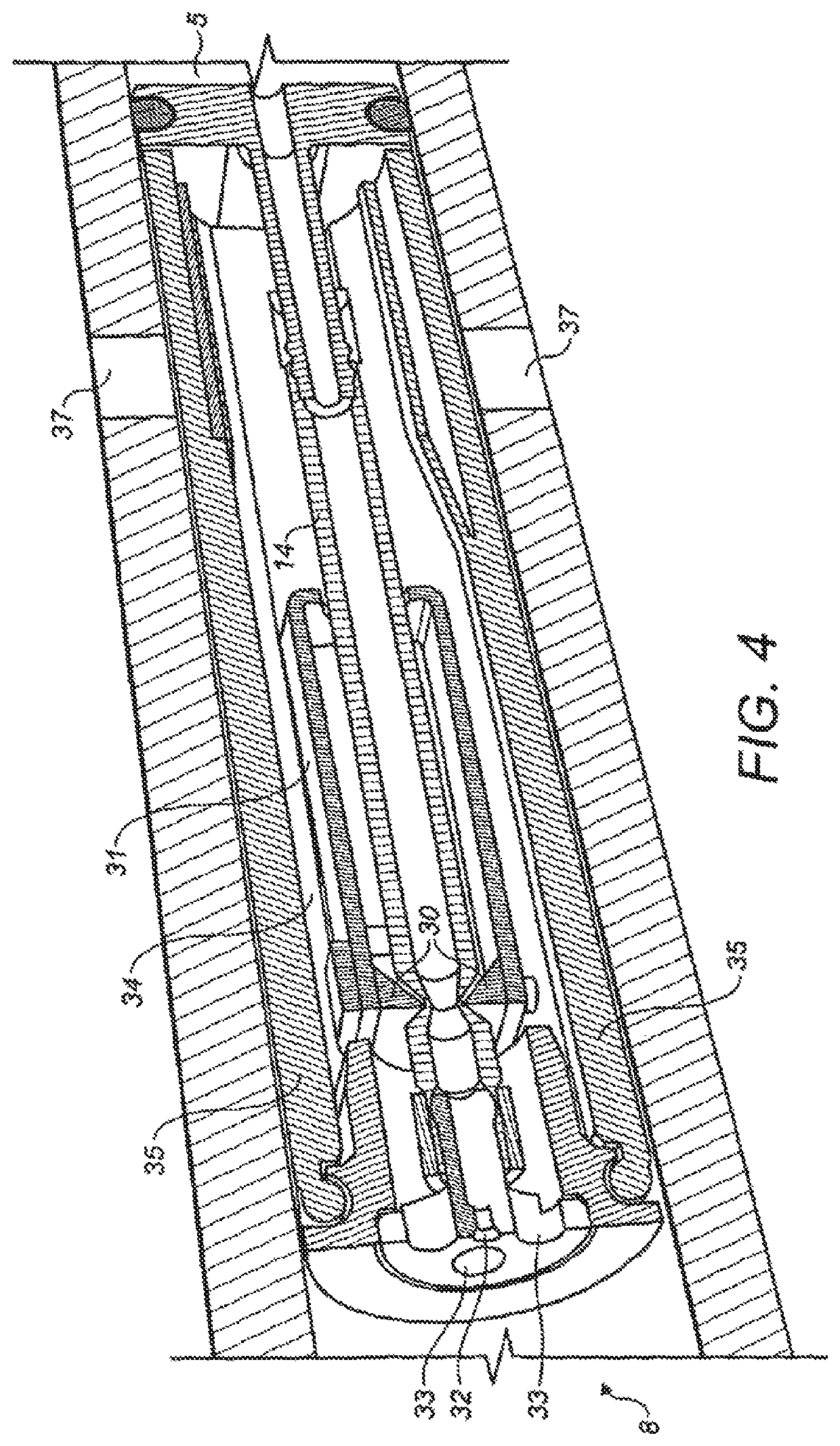Inhaler with a pinch clamp
a technology of inhaler and pinch clamp, which is applied in the field of inhalers, can solve the problems of poor craving score and cessation rate, device is difficult to seal, and the dosing is not predictabl
- Summary
- Abstract
- Description
- Claims
- Application Information
AI Technical Summary
Benefits of technology
Problems solved by technology
Method used
Image
Examples
Embodiment Construction
[0037]The present invention relates to an improvement of the outlet valve for a breath-activated cigarette and only this aspect of the invention will be specifically described here. For details of the construction of the remainder of the cigarette device and its refill mechanism, reference is made to WO 2009 / 001078.
[0038]The first example of an inhaler in accordance with the present invention is shown in FIGS. 1 to 3.
[0039]The device has a housing 1 made up of a main chassis 2 and a closure element 3 as shown in FIG. 1. This is held in place by label 4. Within the housing, there is a reservoir 5 containing the inhalable composition. This is preferably pressurised but could also work with a non-pressurised reservoir in combination with a Venturi nozzle to generate an enhanced suction force on the reservoir, or a non-pressurised reservoir containing a substance that is prone to evaporating at room temperature. It may be refillable as described in WO 2009 / 001082 through the filling val...
PUM
 Login to View More
Login to View More Abstract
Description
Claims
Application Information
 Login to View More
Login to View More - R&D
- Intellectual Property
- Life Sciences
- Materials
- Tech Scout
- Unparalleled Data Quality
- Higher Quality Content
- 60% Fewer Hallucinations
Browse by: Latest US Patents, China's latest patents, Technical Efficacy Thesaurus, Application Domain, Technology Topic, Popular Technical Reports.
© 2025 PatSnap. All rights reserved.Legal|Privacy policy|Modern Slavery Act Transparency Statement|Sitemap|About US| Contact US: help@patsnap.com



